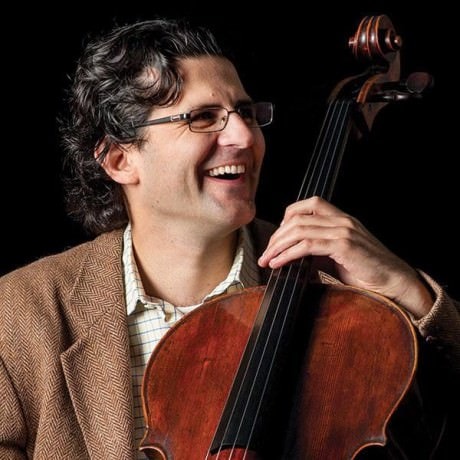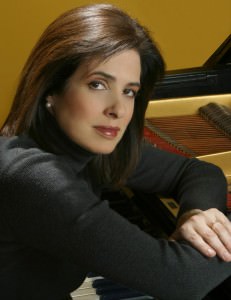Picture this: A leading classical performer finds a program from a century ago played by a legend on his instrument, sets the date to recreate the concert for the exact 100th anniversary of the event, and makes sure the location is the same music conservatory in the same city.

Now add this: He plays the concert on the exact same instrument used 100 years earlier.
That’s what cellist Amit Peled accomplished on Thursday evening at the Peabody Institute in Baltimore. In a landmark event that sold out the Miriam A. Friedberg Concert Hall with a global audience tuning in on Johns Hopkins University’s live-streaming service, Peled recreated Pablo Casals’ Peabody concert of February 12, 1915. And he played it on Casals’ 1733 Goffriller cello with which Casals performed worldwide, including in a 1961 recital at the White House before President and Mrs. Kennedy. (Casals himself lived to almost 100.)
In the process, Mr. Peled not only delivered a memorable performance but also demonstrated a fascinating piece of music history that no mere lecture could accomplish. The cornerstone of the program, Johann Sebastian Bach’s Suite No. 3 in C Major for unaccompanied cello, represented Casals’ popularization of the Bach suites. They were relatively unimportant in the cello repertoire until Casals came along but are now the lodestone for serious cello students worldwide. (A video loop of Casals playing – technically “practicing” – all of the movements of all six Bach cello suites runs continuously at the Casals Museum in San Juan, Puerto Rico.)
Mr. Peled also delivered on his explicit mission to make cello concerts fun again. Known both in the mid-Atlantic region and elsewhere for his humorous comments and audience engagement, Mr. Peled kept things serious in the first half of the concert but then grabbed a mike and chatted his way through a number of guideposts in the second half, which was jammed with a set of shorter items from various musical periods that Mr. Peled dubbed “desserts.”
He explained that the typical solo recital today on the cello – or most any other instrument for that matter – contains as many as three long-form pieces such as multi-movement suites and sonatas. But he likened that to having three steaks for dinner, and expressed his own preference for “one steak and many desserts.” His real point was that the way Casals structured his program was much more typical of his day, when the point of a recital was “entertainment.” Imagine that!
Technically the program opened with a piece called a “sonata” in G minor by George Frideric Handel, but the movements were short and winning and more of a nice table-setter than most later sonatas. Then came the Bach suite – a major, 7-movement enterprise (and the only composition on the program not accompanied by pianist Noreen Polera).
Clearly amped up for the event, Mr. Peled dug into the 18th-century cello and some of the early movements delivered more projection than Mr. Peled’s tone that at its best is both glowing and highly charged emotionally. The suite being in C major, it accesses the very bottom note of the instrument – a C string – and Mr. Peled seemed to be looking for the balance between the power and articulation he was clearly delivering and the tone that seemed still latent.
But in the suite’s “Sarabande”, a kind of moderately slow country dance, Mr. Peled delivered a highly interpretive reading that lingered longingly and beautifully on certain notes and phrases and began to give the suite plenty of room to breathe.
With the “Bourrée”, Mr. Peled essentially gave a clinic on cello technique with very fluid bow-work, perfect “double-stops” (the art of playing multiple notes at the same time), and increasingly lovely tone quality. (This Bourrée from the third Bach cello suite is often lifted and performed separately, and is a particular staple of cello lessons.) With the concluding “Gigue” Mr. Peled went to town with a snappy and happy conclusion to this major work.
And then on to the desserts – six of them! – from composers ranging from Beethoven to Gabriel Fauré and Camille Saint-Saens. Three of them were special delights.
Fauré’s Elegie for cello and piano is a showcase for subtle but gorgeous harmonies, and Mr. Peled’s cello rang out to the hall. Fauré’s Papillon (or “Butterfly”) is a brilliant little composition that shows that in the right hands, a cello doesn’t have to take second place to a violin, piano or anything else in terms of its virtuoso capabilities.
And Saint-Saens’ Allegro Appasionato was filled with color and style and demonstrated the French composer’s affinity for employing the uniquely evocative tone of the cello, especially with the way Mr. Peled moved through the spectrum of the Goffriller cello’s dark or “burgundy” tones in its lower registers to its somewhat more golden sounds higher up.

And then – speaking of dessert – Mr. Peled tacked on an encore, the one variance from Casals’ program (no one seems to be sure what Casals played as an encore, although he almost certainly did so). The Israeli-born cellist almost stopped the air with the opening “Prayer” of a suite called From Jewish Life by Ernest Bloch. Mr. Peled called on the full capabilities of a cello to slide and sing through notes, creating a mood and a story in a way that almost no other instrument can quite do.
Special credit for the program’s success goes to Noreen Polera on the piano. Not without reason is she considered one of the region’s most highly sought-after collaborative pianists. Her weaving in and out of the main lines of all of the cello compositions other than the Bach suite was dead-on perfect. And if she played a single wrong note anywhere in the concert, it certainly escaped me. Mr. Peled and Ms. Polera are continuing their ongoing collaboration, including in an upcoming CD release, and they are a team worth searching out here in our region – among his other affiliations Mr. Peled is a faculty member at Peabody – or anywhere else.
Running Time: 1 hour and 50 minutes, with one 15-minute intermission.
Cellist Amit Peled performed on Thursday, February 12, 2015 at 8 p.m. at the Miriam A. Friedberg Concert Hall – 17 E. Mount Vernon Place, Baltimore, MD. For future concerts and events involving Mr. Peled, check out his concert calendar.
RATING:




